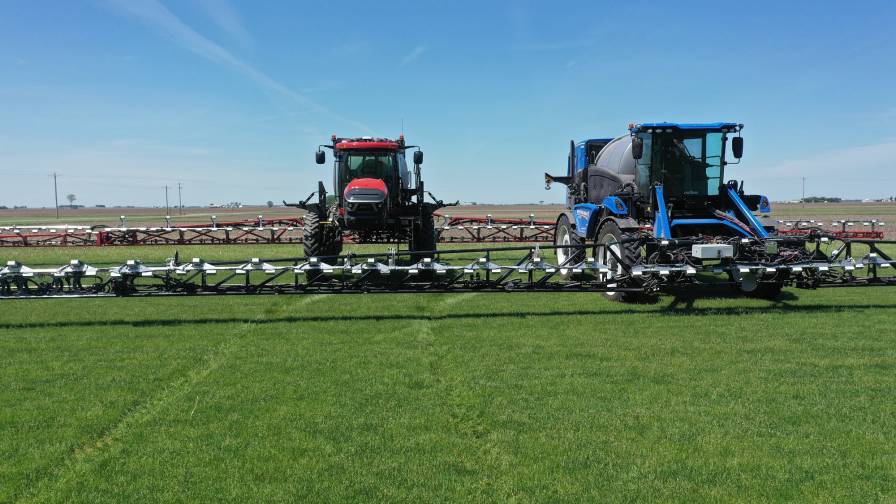Addressing Labor Shortages in Agriculture: The Role of AgTech Innovations and Government Support
The agricultural industry is facing significant labor shortages, with challenges differing across regions due to factors like climate, infrastructure, and access to capital. In response, agtech innovations such as drones, robotics, and heat-blocking greenhouse covers are emerging as potential solutions to enhance crop yield, efficiency, and sustainability. John Keppler, Executive Chairman of iyris, shares insights into how these technologies are being developed and adopted to address labor shortages, particularly in hot-climate regions.
How are agtech innovations like drones and robotics being used globally to address labor shortages in agriculture, and what impact do they have on crop yield and efficiency?
John Keppler: There is a lot of focus on developing automation in agriculture globally. Labor costs in some regions are an influencing factor in the sustainability of farming operations. When these systems are effectively developed, they have the potential to enhance crop yield and operational efficiency. However, demonstrating a satisfactory return on investment for growers remains essential. In hot climate regions, agricultural challenges differ; labor costs are generally less significant compared to factors such as water and energy expenses.
Our approach to innovation is to ensure the solutions are (i) easy for farmers to adopt, (ii) leverage existing supply chains, (iii) deliver a quick payback for farmers and (iv) mitigate increasing temperatures and water scarcity.
MORE BY LAUREN MILLIGAN
Balancing Purpose and Profit: Granite Creek’s Jim Clark on ESG, AgTech, and the Future of Agribusiness Investment
Ag Tech Talk Podcast: Tria Americas’ Jim Beneke Discusses Adaptive Artificial Intelligence in Formulation
Ag Tech Talk Podcast: How AI and Geospatial Tech Are Transforming Carbon Measurement and Supply Chains
Drones and robotics could certainly be an innovation for the future. The challenge is that it will take time until these solutions are commercially available.
Solutions such as our SecondSky range of near-infrared heat-blocking greenhouse covers are designed for low- to mid-tech growers, who represent 70% of farmers globally and produce over 95% of the world’s fruit and vegetable supply. For these farmers, innovations like drones and robotics often remain inaccessible due to the significant investment required, their unproven track record in some applications, and the time needed for implementation. In contrast, our SecondSky technology provides an immediately available solution that begins delivering resource savings and yield improvements from the moment it is installed.
What roles do government policies and investments play in supporting research, development, and adoption of ag-tech solutions to tackle labor shortages?
JK: At iyris, we have been fortunate to receive early-stage support and investment from KAUST (King Abdullah University of Science & Technology) in Saudi Arabia. This backing was crucial in advancing the research and development projects of our founders to the point of commercializing our products. Our flagship research and validation facility in the UAE is located within the Silal Innovation Oasis in Al Ain, a development made possible by supportive government policies and investments that established these institutions.
ABG: What challenges, such as cost, infrastructure, or workforce training, are hindering the widespread adoption of agtech solutions in different countries?
JK: Most growers worldwide are low- to mid-tech farmers with limited access to capital. They tend to be cautious and adopt new innovations only after these solutions have demonstrated proven effectiveness in their specific markets and for their particular crops.
Our focus on solutions for hot-climate agriculture reflects our understanding of the unique challenges farmers face in regions affected by heat stress. We’ve found that developing “drop-in” solutions — such as high-performance greenhouse covers that easily replace traditional plastic covers — facilitates faster adoption of new technologies. A rapid return on investment is also crucial. In controlled agriculture, farmers must periodically replace their greenhouse covers (typically every three years for polyethylene and eight years for polycarbonate). While SecondSky covers come at a premium, most farmers achieve a return on that investment within a single crop season, if not sooner. If growers must wait four or five seasons to see a return, the likelihood of adopting agtech solutions diminishes significantly.
Access to farmers can be a significant challenge that limits widespread adoption of new technologies. Many farmers have established long-term relationships with their suppliers, such as agricultural distributors. At iyris, we recognize this and prioritize building strong partnerships with key players in the existing supply chain. For example, SecondSky is exclusively distributed in the UAE through leading agricultural suppliers, and globally, we maintain a strategic supply agreement with a leading manufacturer and distributor of agricultural covers. These partnerships greatly enhance our market reach and, more importantly, improve the accessibility of our products to farmers.
ABG: How are countries balancing traditional farming practices with the integration of advanced technologies to address labor shortages?
JK: In the countries we prioritize, labor availability is generally less of a challenge compared to mitigating the impacts of climate change.
Even growers with the capital to adopt advanced technologies must address heat stress on their crops, often incorporating more automation into their operations than those using traditional methods. This is crucial for food security, as it allows for extended growing seasons and reduces dependence on imports.
Our solutions aim to help farmers using traditional practices extend their growing seasons, enhancing their financial sustainability. We view this as a continuous process: by improving the financial stability of traditional farmers through solutions like SecondSky, they can gradually consider higher levels of investment in advanced technologies over time.
ABG: How do cultural attitudes toward technology in agriculture vary across regions, and are certain crops or sectors benefiting more from these innovations?
JK: Certain markets are more inclined to be early adopters of new technology, typically those that are expert-driven and have limited government support for the farming industry. Australia is a prime example of this, where farmers recognize that maintaining a competitive edge is crucial to sustaining and growing their businesses.
The value of the crop also plays a significant role in the adoption of innovations. Higher-value crops, such as those in berry farming, are more likely to see the introduction of new technologies.










